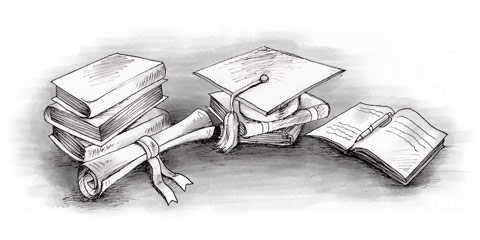Primary school is split into two cycles and each cycle is split into different levels called niveles básicos or N.B: First cycle (primer ciclo/ciclo I) years 1 to 4 and second cycle (segundo ciclo/Ciclo II), years 5 to 8.
The primary curriculum includes eleven compulsory areas:
- Language and communication
- Indigenous language (compulsory in the schools with high density of indigenous students)
- Foreign languages (compulsory in Ciclo II)
- Mathematics
- Natural sciences
- History
- Geography and social sciences
- Technology
- Art
- Physical education
- Orientation and religion, which needs to be offered by the school but it’s optional for the students.
Secondary school
Secondary school (enseñanza media) provides pupils with more specialised training than their basic education and prepares them for university or vocational training. The four years of compulsory secondary school are divided into two, two-year cycles, the curriculum containing compulsory and optional subjects.
During secondary school, the compulsory subjects are:
- Language and communication,
- Mathematics
- Science (physics, chemistry and biology)
- History
- Geography
- Social science
- English
- Physical education
- Visual or musical arts
- Technology, the first two years
- Philosophy and psychology, the last two years.
Upon completion of secondary school, pupils who have achieved passing grades are awarded a graduate of secondary education (Licenciado en Enseñanza Media) certificate enabling them access to higher education or to undergo specialised vocational training. Also, pupils finishing professional school obtain a diploma of técnico de nivel medio in whatever specialty they studied.
Enrollment
All children have the right to receive an education and therefore, they have to go to school. Parents can apply to any school they like for their children, however the school may refuse them for various reasons. Enrollment rules apply for Chileans and foreigners, nevertheless, as we mentioned previously, foreigners must pass an exam in order to obtain recognition of their previous educational certificates.
Children aged 6 years old before March 31st may enter the first level of primary education and there is no other age limit for this level. Only a birth certificate is required for first-graders. If you are applying for a levels other than the first, a certificate of the previous year and a school report are required.
For secondary school, a birth certificate is required as well as a certificate of the previous year’s studies and a school report.
All primary schools are free but not secondary schools. Whether you are applying for a government subsidised school or non government subsidised school at a secondary level, a fee must be paid for the selection process as well as another fee for the enrollment.
Each fee is no more than 3,500 pesos (around €6 or US$8). The difference being that in a government subsidised school, there are no compulsory monthly fees and if asked, the parent can refuse the payment. Whereas in a non-subsidised school, there can be quarterly fees (no more than 4 payments a year) and the price is fixed for the next three years.

